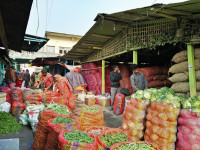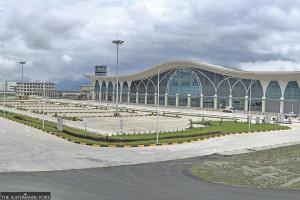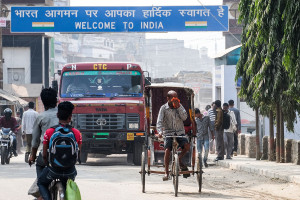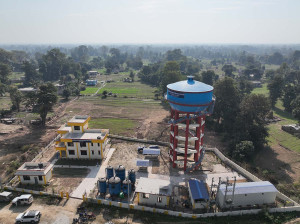Money
Global apparel brands stall Nepal plans amid instability
A successful India-US tariff deal could narrow Nepal’s chance in attracting foreign investors. Their tariff talks are due to conclude this month.
Krishana Prasain
Citing political instability following the violent Gen Z protests in early September, international clothing brands operating in India, including Indian labels exporting to the US, have paused their plans to invest in Nepal as well.
“Potential investors are demotivated and in a dilemma after the Gen Z protest,” said Pashupati Dev Pandey, president of the Garment Association of Nepal, the umbrella organisation of readymade garment makers and exporters.
Protesters had set fire to several luxury hotels in Kathmandu, including the Hilton Kathmandu, Hyatt Regency, and Hotel Varnavas, raising concerns about the security of investment in the country.
Pandey said a US trade delegation is currently in India for tariff negotiations, a process which is expected to conclude by November. “That is also why the investors are in a wait-and-watch mode,” he added.
“If the ongoing trade negotiations between India and the US end positively, international clothing brands operating in India as well as Indian brands might not come to Nepal to explore business,” Pandey warned.
Indian media quoted Commerce Minister Piyush Goyal as saying that India is in advanced stages of talks with Washington. Reports suggest the proposed deal could sharply reduce US tariffs on Indian exports, potentially from 50 percent to 15 percent.
Global brands traditionally manufacturing in India—such as GAP, Puma, Nike, and Zara—had considered shifting part of their production to Nepal after the US imposed heavy tariffs on Indian goods, a few Nepali businesses that the Post talked to had said before the Gen Z protest.
The US imposed 50 percent tariffs last year on products including textiles and apparel, gems and jewellery, leather, footwear, marine goods, chemicals, and automobile components. By comparison, goods imported from Nepal face only a 10 percent tariff, making the country an attractive alternative for apparel manufacturers.
Washington’s duties were imposed in retaliation against India’s continued purchases of Russian oil, part of US President Donald Trump’s broader effort to put pressure on Moscow to end its war in Ukraine.
Since returning to the White House this year, Trump has increasingly used tariffs as a sweeping economic weapon, rattling global trade.
Reports said India’s goods exports to the US—its largest export market—dropped by 20 percent in September and nearly 40 percent over the past four months after the steep tariffs took effect.
According to the Trade and Export Promotion Centre, Nepal’s readymade garment exports fell by 10.22 percent to Rs2.51 billion in the first three months of the current fiscal year, ending mid-October. The country exported 15.88 million pieces of garments worth Rs8.75 billion last fiscal year.
The Garment Association of Nepal said the decline was partly due to reduced production during festive holidays and the recent political unrest.
Nepali manufacturers, however, believe that if the US and India fail on tariff negotiation, the US buyers may turn to Nepal after the new tariff regime has made Indian and other markets less competitive.
Pandey said the demand for readymade garments in the US is expected to rise by 10-15 percent following the 50 percent tariff hike. “With the potential increase in demand, domestic producers have been investing to expand their capacity,” he added.
Producers have also stressed the need to prevent transhipment practices, as the US has warned it will impose strict penalties if such cases are discovered. Transhipment—rerouting goods through a third country without significant processing to bypass tariffs—is illegal and can lead to heavy fines and prison terms. Nepal currently lacks a clear legal policy on transhipment.
Indian gold jewellery producers have also expressed interest in exploring the Nepali market after the tariff hike.
Arjun Rasaili, president of the Federation of Nepal Gold and Silver Dealers Association, said some Indian jewellery makers have made preliminary inquiries, though “nothing concrete has come from their side.”
Exports of silver jewellery from Nepal increased by 29.35 percent to Rs68.41 million in the first three months of the current fiscal year, while gold jewellery exports rose by 16.70 percent to Rs10.64 million.
In the last fiscal year, Nepal exported silver jewellery worth Rs178.71 million and gold jewellery worth Rs47.87 million. Silver jewellery was mainly exported to the US, followed by France, Germany, Italy, and Japan, while gold jewellery was primarily exported to the US.




 18.12°C Kathmandu
18.12°C Kathmandu















